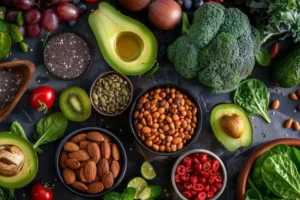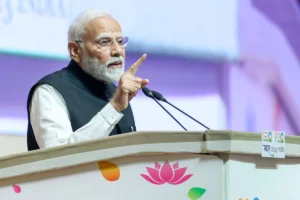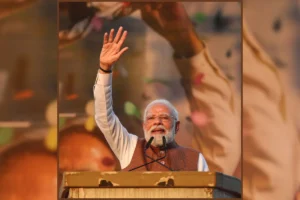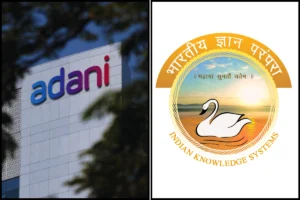
The US-India partnership is on a steady upward trajectory as a result of Washington and New Delhi making a concerted effort to move past Cold-War differences and toward advancing Indo-Pacific synergies, according to an article in Comparative Connections, a triannual e-Journal of bilateral relations in the Indo-Pacific.
Akhil Ramesh and Michael Rubin said in the article that the US-India partnership continued to expand in the four months between January and April 2023.
“Defence, technology and economic cooperation grew significantly in scope. The Biden administration’s democracy summit, Quad meetings, and bilateral meetings between various divisions and departments of the US and Indian governments show there will be no lack of engagement at the highest levels of government,” they said.
“Supplementing the high-level cooperation, people-to-people ties will witness a revived enthusiasm thanks to Secretary of State Antony Blinken’s work to ease the visa backlog in consulates in India. This will allow more Indian students and professionals to travel to the US and back with ease,” they added.
The article noted that the biggest developments may not be government to government. In April 2023, Apple opened its first store in India. Apple’s entry into India reflected the effort both to establish alternatives to China’s dominance of supply chains and to gain a larger share of the market in a country that, according to the United Nations Population Fund, now has the world’s largest population.
The White House coordinator for Indo-Pacific affairs, Kurt Campbell, early in 2023, singled out India as the major US diplomatic focus for the upcoming year. Speaking at an event, he said, “Our interests are to see India playing an ever larger, responsible role in almost everything that we’re doing.” To that end, the first four months of 2023 were a great start, the article said.
In late April, the US National Security Advisor Jake Sullivan, speaking to a packed audience at Brookings Institution, clarified the administration’s agenda of creating new economic and trade coalitions and the risk of isolating traditional allies and partners.
This paradigm shift in the conceptualization of economic policy in Washington DC, wherein trade policy and national security policymaking intersect at varying points to influence each other, “has support among historically protectionist traders such as India”.
The “New Washington Consensus,” as some analysts have described it, resonates in New Delhi, said Ramesh and Rubin.
On May 24, 2022, President Joe Biden met Prime Minister Narendra Modi on the sidelines of the Quad summit in Tokyo.
According to the White House readout of the meeting the leaders reviewed the progress made in the US-India Comprehensive Global Strategic Partnership.
“They committed to deepen the Major Defense Partnership, encourage economic engagement that benefits both countries, and expand partnership on global health, pandemic preparedness, and critical and emerging technologies.”
Both President Biden and PM Modi have consistently and vocally emphasized their desire to increase the share of manufacturing in their respective economies. For the US, this meant reviving the lost glory of the 1990s when it was a market leader in what are today several vital and critical sectors such as semiconductor manufacturing and processing of critical minerals, said Ramesh and Rubin.
The Biden administration has channelled investments from the private sector by offering generous subsidies through industrial policies such as the CHIPS and Science Act, the Inflation Reduction Act, and the bipartisan infrastructure law.
Similarly, PM Modi, at almost the end of his second term in office has continued the policy focus on infrastructure and manufacturing with the government’s annual budget featuring an increase in capital expenditure, said the article in Comparative Connections.
The Biden administration’s legislative successes such as the IRA and CHIPS and Science Act caused considerable discontent among its allies and partners in East Asia and Europe. New Delhi’s response to this legislation has ranged from oblivious to welcoming, said Ramesh and Rubin.
In March 2023, Secretary of Commerce Gina M Raimondo and Union Commerce & Industry Minister Piyush Goyal signed a Memorandum of Understanding on enhancing the semiconductor supply chain during the India-USA Commercial Dialogue in Delhi.
As part of the agreement, the US Semiconductor Industry Association and the India Electronic Semiconductor Association formed a task force to develop a “readiness assessment” of both near-term opportunities and longer-term strategic development.
In Delhi, Defence Minister Rajnath Singh hosted her at his official residence for celebrations of Holi, the festival of Colors, Love, and Spring. The following month, Union Finance Minister Nirmala travelled to Washington for World Bank-International Fund meetings but separately met with US Treasury Secretary Janet.
The synergies in macroeconomic policies in both countries enabled complementary business and technological agreements such as iCET.
During the Quad meeting in Tokyo in May 2022, Biden and Modi announced the US-India initiative on Critical and Emerging Technology (iCET). On Jan. 31, 2023, National Security Advisors Jake Sullivan and Ajit Doval inaugurated the iCET in Washington, DC.
Not only Sullivan’s presence, but that seniority of the entire US delegation, which included the administrator of the National Aeronautics and Space Administration (NASA), the director of the National Science Foundation, and senior officials from the Departments of State, Commerce, and Defence, signalled the importance Washington puts on developing ties with New Delhi.
The same was true on the Indian side, with the government of India’s principal scientific advisor, the chairman of the Indian Space Research Organization, the secretary of the Department of Telecommunications, and the director-general of the Defence Research and Development Organization accompanying Doval.
The two sides signed a partnership agreement between the National Science Foundation and Indian science agencies to collaborate on a number of hot-button and sensitive areas, such as artificial intelligence, quantum technologies, and high-performance computing, said the article in Comparative Connections, the article said.
The two sides developed a bilateral Defence Industrial Cooperation Roadmap with a focus on jet engines, munitions, and other systems. Aircraft engines are two technologies on which India lags behind top powers.
That the United States is not linking its support for India’s qualitative military development to similar US deals with Pakistan show that the decades-old linkage that guided US policy toward South Asia is eroding, if not already obsolete, Ramesh and Rubin said,adding that a second meeting later this year in New Delhi suggests both countries see iCET as a regular event, rather than a sporadic one
India’s second-largest domestic air carrier, Air India, placed an order for aircraft, valued at over USD 34 billion with Boeing.
Celebrating this announcement, Biden referred to it as a historic purchase with the potential to support about a million jobs in 44 states across the US. This is another occasion where economic policies are in sync.
The writers said that over the last seven years, the US has worked toward reshoring manufacturing and creating jobs within its shores and India under Modi has actively worked toward privatizing industry and revitalizing government enterprises that have potential.
“Recently, renowned economists touted the Indian economy as the major global economy with the lowest possibility for a recession in 2023. Coupled with its strong macroeconomic fundamentals, and policy reforms the Indian growth story is on the right track and the US technological and advanced manufacturing giants have a lot to gain from a flourishing US-India partnership.”
The article said while Washington’s infrastructure drive seeks a revival of manufacturing, an increase in jobs and the transition to a green economy, both PM Modi and Biden administrations’ mandate was partially realized in the last four months.
(Source – ANI)
To read more such news, download Bharat Express news apps




















